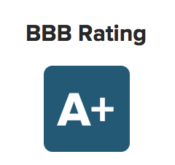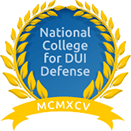184 N.J. 84, 875 A.2d 906
Supreme Court of New Jersey.
STATE of New Jersey, Plaintiff-Respondent,
v.
John R. CUMMINGS, Defendant-Appellant.
Argued March 15, 2005.
Decided June 23, 2005.
Background: Defendant was convicted on his conditional plea of guilty in the Municipal Court, Mahwah Township, of refusing to submit to a chemical test after being arrested for driving while intoxicated. Defendant appealed. The Supreme Court, Law Division, affirmed. Defendant appealed. The Superior Court, Appellate Division, affirmed. Defendant sought certification to appeal.
Holdings: Upon grant of certification, the Supreme Court, Rivera-Soto, J., held that:
(1) for prosecutions under the refusal statute for refusing to submit to a chemical test after being arrested for driving while intoxicated, state must prove statutory elements of defendant’s refusal to submit to a chemical test beyond a reasonable doubt; abrogating, State v. Fahrer, 212 N.J.Super. 571, 515 A.2d 1240, State v. Todaro, 242 N.J.Super. 177, 576 A.2d 307, State v. Wright, 107 N.J. 488, 503, 527 A.2d 379;
(2) this new rule of law announced Supreme Court was to have “pipeline retroactivity” effect, i.e., it would apply in case at bar, in future cases, and in any case still on direct appeal at time holding was set forth; and
(3) application of this new rule of law afforded defendant the choice to either withdraw his conditional plea of guilty and proceed to trial under beyond a reasonable doubt standard of proof, or to accept his earlier conviction and sentence.
Reversed and remanded.
Justice RIVERA-SOTO delivered the opinion of the Court.
In 1981, the Legislature engaged in a substantial and comprehensive revision of our laws governing the operation of motor vehicles by intoxicated persons. As part of that revision, the *89 Legislature provided that a person arrested for operating a motor vehicle while intoxicated who refuses to submit to a chemical test of his breath to determine the content of alcohol in his blood would be subject to certain enumerated, enhanced penalties. In determining the burden of proof for the imposition of those enhanced penalties, the Legislature, at the request of the Governor, provided that the determination whether an accused was statutorily eligible for such penalties would be determined by the civil standard of a preponderance of the evidence.
This appeal requires that we consider, in light of intervening decisions of this Court, whether the statutory burden of proof in a breathalyzer refusal case comports with appropriate constitutional due process requirements for quasi-criminal actions. We hold that, because a breathalyzer refusal case is properly a quasi-criminal matter, the constitutionally required burden of proof is the one applicable to criminal cases: proof beyond a reasonable doubt. We further hold this ruling shall have “pipeline retroactivity” effect. Finally, we remand this case to the municipal court, where the defendant is to be afforded the opportunity either to withdraw his plea and proceed to trial under the proof beyond a reasonable doubt standard of proof, or to accept his earlier conviction and sentence.
I.
On January 7, 2003, defendant John R. Cummings was stopped by Mahwah Township Police Officer Michael Blondin for illegally crossing the center line of traffic. Based on his observations, Officer Blondin believed that defendant was under the influence of an intoxicant and, hence, arrested defendant. Once at the police station, Officer Blondin read aloud to defendant the New Jersey Motor Vehicle Commission’s standard statement required under N.J.S.A. 39:4-50.2(e), and twice requested that defendant submit to a breathalyzer test. Defendant twice refused. Based on those facts, Officer Blondin issued several citations to defendant, including citations for driving while intoxicated in violation of *90 N.J.S.A. 39:4-50, and refusing to submit to a breathalyzer test in violation of N.J.S.A. 39:4-50.4a (Refusal Statute). FN1
FN1. Both the breathalyzer refusal citation and the Law Division’s order of conviction incorrectly identify the governing statutory reference as N.J.S.A. 39:4-50.2, the implied consent section of the driving while intoxicated provisions of the Motor Vehicle Act, N.J.S.A. 39:1-1 to 39:13-8. No complaint has been raised concerning that error and we see no prejudice resulting from it. In the future, however, care should be taken to list instead N.J.S.A. 39:4-50.4a, the exact statutory provision applicable to breathalyzer refusal cases.
**910 On May 29, 2003, defendant, represented by counsel, appeared before the Mahwah Municipal Court and moved to dismiss the citation charging him with refusing to submit to a breathalyzer test. As argued before the municipal court, defendant asserted that the preponderance of the evidence burden of proof set forth in the Refusal Statute violated his due process rights and that, given the nature of the charges against him, he was constitutionally entitled to a trial by jury. Both applications were denied and, pursuant to R. 7:6-2(c), defendant entered a conditional guilty plea to violating the Refusal Statute. FN2 On the charge of violating the Refusal Statute, the municipal court sentenced defendant to an aggregate of $605 in fines, court costs, surcharges and penalties and assessments; a mandatory twelve hours of instruction at the Intoxicated Driver Resource Center; and a mandatory six month suspension of defendant’s right to operate a motor vehicle. At defendant’s request, the municipal court stayed the imposition of defendant’s sentence under the Refusal Statute pending appeal to the Law Division on the issues preserved by defendant’s retraxit plea.
FN2. Defendant also entered guilty pleas to violating N.J.S.A. 39:4-86 (crossing “no passing” double yellow lines) and to an amended citation charging a violation of N.J.S.A. 39:4-97.2 (operating a motor vehicle in an unsafe manner). All other charges were dismissed by the State in exchange for defendant’s guilty pleas. We address only defendant’s plea to violating the Refusal Statute.
Defendant appealed and, on November 12, 2003, the Law Division conducted a trial de novo that consisted solely of argument on defendant’s two legal contentions; no facts or other proofs were *91 adduced. The Law Division also rejected defendant’s constitutional due process challenge to the preponderance of the evidence burden of proof embodied in the Refusal Statute, found defendant guilty of refusing to submit to the breathalyzer test, and imposed the same sentence as had the municipal court. FN3 The Law Division also stayed defendant’s sentence pending appeal.
FN3. The order entered by the Law Division provides that “defendant is guilty beyond a reasonable doubt, de novo, of refusal to submit to a breathalyzer….” However, because the Law Division’s review of defendant’s retraxit guilty plea before the municipal court was limited solely to argument on defendant’s points of law, there is no factual foundation for that finding and, therefore, we cannot give it preclusive effect here.
Before the Appellate Division, defendant again maintained that the preponderance of the evidence burden of proof set forth in the Refusal Statute violated his due process rights and that, given the nature of the charges against him, he was constitutionally entitled to a trial by jury. In an unpublished opinion, the panel rejected both constitutional arguments. The Appellate Division, relying on State v. Fahrer, 212 N.J.Super. 571, 515 A.2d 1240 (App.Div.1986), and State v. Todaro, 242 N.J.Super. 177, 576 A.2d 307 (App.Div.1990), “upheld the constitutionality of N.J.S.A. 39:4-50.4a, which requires the State to prove a refusal to consent to a breathalyzer test only by a preponderance of the evidence,” and affirmed defendant’s conviction and sentence. FN4
FN4. Based on State v. Hamm, 121 N.J. 109, 577 A.2d 1259 (1990), cert. denied, 499 U.S. 947, 111 S.Ct. 1413, 113 L.Ed.2d 466 (1991), the Appellate Division also rejected defendant’s claim that he was entitled to a trial by jury on this, his first driving while intoxicated offense, reasoning that “even a defendant charged with a third violation of driving while under the influence of alcohol [which would trigger enhanced penalties far beyond those for a first offense] is not entitled to a trial by jury.” Therefore, the panel concluded that defendant cannot properly assert a right to trial by jury. That issue, however, is not before us.
**911 We granted certification to consider only one issue: whether the preponderance of the evidence burden of proof in the Refusal Statute violates due process. 182 N.J. 148, 862 A.2d 56 (2004).
*92 II.
A.
In its original iteration, the Refusal Statute provided that any driver’s license suspensions to be imposed for failing to submit to a breathalyzer test were to be imposed administratively, through the then Director of Motor Vehicles. L. 1966, c. 142, § 4 (originally codified at N.J.S.A. 39:4-50.4). Placed in context, the penalties at that time for a violation of the Refusal Statute were limited to an administratively imposed six-month suspension of driving privileges. Ibid. As part of the Legislature’s revision to New Jersey’s driving while intoxicated laws intended “to curb the senseless havoc and destruction caused by intoxicated drivers,” State v. Tischio, 107 N.J. 504, 512, 527 A.2d 388 (1987), the Legislature shifted the forum for the imposition of all penalties under the Refusal Statute from the administrative to the judicial forum and proposed that the burden of proof be proof beyond a reasonable doubt. State v. Wright, 107 N.J. 488, 503 n. 8, 527 A.2d 379 (1987). The Governor, however, conditionally vetoed that provision, stating
I believe that the beyond a reasonable doubt standard of proof is an unusually harsh burden of proof in a non-criminal case and will encourage more people to refuse to submit to a breathalyzer test. Thus, I recommend that the preponderance of the evidence standard currently utilized in the administrative hearing of this type of case be retained.
[Report of the Governor to the Assembly re: Assembly Bill No. 2293 (January 4, 1982).]
“The Assembly adopted the Governor’s recommendation and, as finally passed, N.J.S.A. 39:4-50.4a provides for a preponderance of the evidence standard of proof for breathalyzer refusal convictions. L. 1981, c. 512, § 2.” State v. Wright, supra, 107 N.J. at 503 n. 8, 527 A.2d 379.
Since the preponderance of the evidence standard was adopted in judicially determined breathalyzer refusal cases, the penalties under the Refusal Statute have increased significantly. In contrast with the earlier penalties, a first-time offender who today is convicted of refusing to submit to a breathalyzer test after being *93 arrested for driving while intoxicated faces a suspension of his driving privileges for a minimum of seven months to a maximum of twelve months, a fine of not less than $500, and mandatory confinement of twelve to forty-eight hours at an Intoxicated Driver Resource Center. See L. 2004, c. 8, § 1 (amending N.J.S.A. 39:4-50.4a, eff. Apr. 26, 2004). FN5 Those penalties increase for repeat offenders as well as for those offenses committed on or within 1,000 feet of school property or while driving through a school crossing. Ibid. It is against this backdrop that we consider the burden of proof required in order to sustain a conviction under the Refusal Statute which, by its explicit terms, provides as follows:
FN5. The first-time offender penalties in effect at the time of defendant’s conviction under the Refusal Statute were a six-month suspension of driving privileges, a mandatory confinement of 12 to 48 hours at an Intoxicated Driver Resource Center, and a fine of not less than $250 and not more than $500. See L. 1981, c. 512, § 2, amended by L. 1981, c. 537, § 2; L. 1994, c. 184, § 2; L. 1997, c. 277, § 2; L. 1999, c. 185, § 5.
The municipal court shall determine by a preponderance of the evidence whether the arresting officer had probable **912 cause to believe that the person had been driving or was in actual physical control of a motor vehicle on the public highways or quasi-public areas of this State while the person was under the influence of intoxicating liquor or a narcotic, hallucinogenic, or habit-producing drug or marijuana; whether the person was placed under arrest, if appropriate, and whether he refused to submit to the test upon request of the officer; and if these elements of the violation are not established, no conviction shall issue.
[N.J.S.A. 39:4-50.4a (emphasis supplied).]
In State v. Fahrer, 212 N.J.Super. 571, 515 A.2d 1240 (App.Div.1986), the Appellate Division addressed the standard of proof in breathalyzer refusal hearings in the context of the Legislature’s intent, holding that “[w]hile prosecutions under the Motor Vehicle Act are sometimes considered quasi-criminal actions, the legislative history of N.J.S.A. 39:4-50.4a evinces an intent that proceedings under this statute continue as civil in nature thus requiring only a preponderance standard for conviction.” Id. at 576, 515 A.2d 1240 (citations omitted). As the Appellate Division then understood, because the elements of the Refusal Statute remained *94 unchanged, “the apparent intent of the Legislature was to retain the civil nature of the proceeding with a change in the forum only for the purpose of providing ‘an efficacious means of [disposing] of all issues related to the drunk driving law in the most convenient forum.’ ” Id. at 577, 515 A.2d 1240 (citations omitted). The panel found that the Refusal Statute had “neither a punitive purpose [n]or effect, [and that] its transfer of jurisdiction over refusal cases to the municipal courts [did] not operate to negate the historically civil character of the proceeding.” Ibid. The Appellate Division thus concluded that “[t]he statutory scheme ‘is not to punish the driver but to protect the motoring public by removing the offending driver from the highways with reasonable dispatch.’ ” Ibid. (citing In re Kallen, 92 N.J. 14, 29, 455 A.2d 460 (1983)).
Nine months later, this Court considered whether a conviction for failing to submit to a breathalyzer test could be sustained in the absence of proof that the defendant in fact was operating a motor vehicle at the time of his arrest. State v. Wright, supra, 107 N.J. at 490, 527 A.2d 379. While sustaining that conviction and holding that “the Legislature did not intend to require proof of actual operation of a motor vehicle for a conviction under the refusal statute[,]” id. at 494, 527 A.2d 379, we observed, albeit in dicta, that “[a] breathalyzer refusal hearing has always been treated as a civil matter; the standard of proof in such a proceeding is a preponderance of evidence.” Id. at 503, 527 A.2d 379 (citation and footnote omitted).
In State v. Todaro, 242 N.J.Super. 177, 179, 576 A.2d 307 (App.Div.1990), the Appellate Division yet again addressed the constitutionality of the statutory burden of proof in breathalyzer refusal hearings and summarily dispatched that argument:
[The defendant], for the first time on appeal, challenges the constitutionality of N.J.S.A. 39:4-50.4a on the grounds that the breathalyzer refusal statute uses a preponderance of the evidence standard of proof rather than one of beyond a reasonable doubt. The constitutional argument is incorrectly premised, however, upon [the defendant’s] characterization of the refusal statute as criminal or quasi-criminal in nature. However, it is well settled in New Jersey that while drunk driving is a quasi-criminal offense, “[a] breathalyzer refusal hearing has always *95 been treated as **913 a civil matter; the standard of proof in such a proceeding is a preponderance of the evidence.” State v. Wright, 107 N.J. 488, 503, 527 A.2d 379 (1987). See also State v. Pandoli, 109 N.J.Super. 1, 4, 262 A.2d 41 (App.Div.1970).
Nine years later, the landscape that informs our consideration of the standard of proof applicable to breathalyzer refusal hearings shifted substantially. In State v. Widmaier, 157 N.J. 475, 500, 724 A.2d 241 (1999), a unanimous Court held that, “at least for double jeopardy purposes under the United States and New Jersey’s Constitution, a violation of the Implied Consent Law and a prosecution under the refusal statute must be regarded as quasi-criminal in nature,” and therefore barred the State’s appeal of an acquittal under the Refusal Statute.
[1] Defendant suggests that the core analytical principles for which State v. Widmaier, supra, stands require a re-examination of the burden of proof in breathalyzer refusal cases. We agree. Upon such re-examination, we perceive no meaningful difference between the application of criminal double jeopardy principles to actions under the Refusal Statute, and the application of the criminal burden of proof-proof beyond a reasonable doubt, in lieu of the civil standard of preponderance of the evidence-to prosecutions under the Refusal Statute. Once a determination is made that a proceeding is quasi-criminal in nature, and State v. Widmaier, supra, does so for breathalyzer refusal prosecutions, FN6 we must consider whether the full panoply of rights and obligations concomitant to a criminal prosecution also apply.
FN6. As a general matter, “proceedings involving motor vehicle violations in the municipal courts are quasi-criminal in nature [where the] offenses must be proved beyond a reasonable doubt.” State v. Dively, 92 N.J. 573, 585, 458 A.2d 502 (1983) ( citing State v. DiCarlo, 67 N.J. 321, 327, 338 A.2d 809 (1975), and State v. Emery, 27 N.J. 348, 353, 142 A.2d 874 (1958)).
[2] That analysis leads us inescapably to the conclusion that, despite the clear legislative election as well as prior acceptance of the preponderance of the evidence standard as the appropriate standard for breathalyzer refusal cases, the proper standard of proof here is proof beyond a reasonable doubt. That conclusion is *96 compelled by the application of simple logic. If an acquittal under the Refusal Statute is to have the benefit of the double jeopardy bar, thereby prohibiting the State’s appeal therefrom, then it stands to reason that the State’s burden of proof must mirror the burden required of all other prosecutions that similarly are subject to double jeopardy considerations. That standard is proof beyond a reasonable doubt. Hence, we hold that, for prosecutions under N.J.S.A. 39:4-50.4a, the State must prove the statutory elements of a defendant’s refusal to submit to a breathalyzer test beyond a reasonable doubt.
Our ruling should have no discernable adverse effect on the prosecution of those who refuse to submit to a breathalyzer test. Police officers still must provide defendants the standardized statement of the consequences for the failure to submit to a breathalyzer test required under N.J.S.A. 39:4-50.2(e); the police officer must still have had “probable cause to believe that the person had been driving or was in actual physical control of a motor vehicle on the public highways or quasi-public areas of this State while the person was under the influence of intoxicating liquor or a narcotic, hallucinogenic, or habit-producing drug or marijuana[,]” N.J.S.A. 39:4-50.4a; the police officer must still demonstrate whether the defendant was **914 placed under arrest, ibid.; and the police officer must still prove that the defendant “refused to submit to the [breathalyzer] test upon request of the officer.” Ibid. Save for the burden of proof, nothing has changed. And, in this context, it is difficult to envision a set of circumstances where the same quality of proofs tendered in the past to establish those elements under the preponderance of the evidence standard will somehow fall short of satisfying the standard of proof beyond a reasonable doubt in the future.
B.
[3] [4] We must now address whether the rule of law here adopted-that a conviction under the Refusal Statute requires proof beyond a reasonable doubt-is to be applied retroactively *97 and, if so, to what extent, a determination that implicates a three-step analysis. State v. Knight, 145 N.J. 233, 249-53, 678 A.2d 642 (1996). First, we must engage in “the threshold inquiry of whether the rule at issue is a ‘new rule of law’ for purposes of retroactivity analysis.” Id. at 249, 678 A.2d 642. The test for determining whether “the rule at issue is a ‘new rule of law’ ” is whether a “case announces a new rule when it breaks new ground or imposes a new obligation on the State[ ] … [or] if the result was not dictated by precedent existing at the time the defendant’s conviction became final.” Id. at 250-51, 678 A.2d 642 (citations and internal quotation marks omitted). Stated differently, “a decision involving an ‘accepted legal principle’ announces a new rule for retroactivity purposes so long as the decision’s application of that general principle is ‘sufficiently novel and unanticipated.’ ” Id. at 251, 678 A.2d 642 (citation omitted).
[5] [6] If that analysis yields the conclusion that a new rule of law in fact is announced, we proceed to the second step of the retroactivity analysis:
If a decision indeed sets forth a “new rule,” three factors generally are considered to determine whether the rule is to be applied retroactively: “(1) the purpose of the rule and whether it would be furthered by a retroactive application, (2) the degree of reliance placed on the old rule by those who administered it, and (3) the effect a retroactive application would have on the administration of justice.” Although those three factors have received detailed attention in our retroactivity case law, our cases also indicate that the retroactivity determination often turns more generally on “the court’s view of what is just and consonant with public policy in the particular situation presented.”
[Ibid. (citations omitted).
[7] [8] Those factors are not of equal weight, as ” ‘[t]he first factor, the purpose of the new rule, is often the pivotal consideration,’ ” ibid. (citing State v. Burstein, 85 N.J. 394, 406, 427 A.2d 525 (1981)), and “[t]he second and third factors come to the forefront of the retroactivity analysis when the inquiry into the purpose of the new rule does not, by itself, reveal whether retroactive application of the new rule would be appropriate.” State v. Knight, supra, 145 N.J. at 252, 678 A.2d 642. We distinguish between the second and third factors as follows: “[t]he *98 second factor inquires whether law enforcement agents justifiably relied on the old rule in performing their professional responsibilities,” while “[t]he third factor in the retroactivity analysis, the effect a retroactive application would have on the administration of justice, recognizes that courts must not impose unjustified burdens on our criminal justice system.” Ibid.
[9] Once a determination is made that retroactivity is appropriate, we address the **915 final step of the retroactivity analysis to determine which retroactivity option is to be chosen:
This Court has four options in any case in which it must determine the retroactive effect of a new rule of criminal procedure. The Court may decide to apply the new rule purely prospectively, applying it only to cases in which the operative facts arise after the new rule has been announced. Alternatively, the Court may apply the new rule in future cases and in the case in which the rule is announced, but not in any other litigation that is pending or has reached final judgment at the time the new rule is set forth. A third option is to give the new rule “pipeline retroactivity,” rendering it applicable in all future cases, the case in which the rule is announced, and any cases still on direct appeal. Finally the Court may give the new rule complete retroactive effect, applying it to all cases, including those in which final judgments have been entered and all other avenues of appeal have been exhausted.
[Id. at 249, 678 A.2d 642 (citations omitted).
[10] [11] An application of these principles leads to the threshold conclusion that today we do announce a new rule of law: we have increased the burden of proof for breathalyzer refusal prosecutions from the preponderance of the evidence standard to the beyond a reasonable doubt standard. Having determined that a new rule of law has been adopted, we must apply the three factors to be considered as part of the retroactivity calculus. We first examine the purpose of the new rule and readily conclude that it is intended to make the burden of proof in prosecutions for the failure to submit to a breathalyzer test consonant with all other prosecutions under the Motor Vehicle Act. Because “[o]ur courts have long held that prosecutions for ‘a violation of [motor vehicle law] provisions results in a prosecution of a quasi-criminal action,’ ” State v. Widmaier, 157 N.J. 475, 494, 724 A.2d 241 (1999) (citing State v. Cooper, 129 N.J.Super. 229, 231, 322 A.2d 836 (App.Div.), certif. denied, 66 N.J. 329, 331 A.2d 28 (1974)), requiring *99 proof beyond a reasonable doubt for a conviction under the Motor Vehicle Act logically follows, as it is “a standard that is traditionally associated with criminal and quasi-criminal case[s].” State v. Wright, 107 N.J. 488, 503, 527 A.2d 379 (1987).
The second and third factors in the retroactivity analysis also are easily addressed. The second factor-the degree of reliance placed on the old rule by those who administered it-appears self-evident. Since it became effective in 1982, N.J.S.A. 39:4-50.4a has provided for a preponderance of the evidence as the standard of proof in breathalyzer refusal cases, a standard that was sustained consistently, see State v. Wright, supra, and is now re-examined because of the intervening reach of State v. Widmaier, supra. Therefore, one can only conclude that those who administered the rule we change today did so firmly and reasonably relying on its correctness. Finally, the third factor-the effect a retroactive application would have on the administration of justice-weighs heavily, but not dispositively, against complete retroactive application of this new rule. We are mindful of the potentially enormous degree of chaos that may result from the unlimited retroactive application of a rule that increases the burden of proof in what can only be estimated to be thousands of settled Motor Vehicle Act convictions. In sum, then, because the balance of these factors militates against complete retroactive application of this new rule, we select the third retroactivity option listed in State v. Knight, supra: we apply “pipeline retroactivity” to this new rule, that is, **916 this new rule applies in this case, in future cases, and in any case still on direct appeal at the time this new rule is set forth.
C.
[12] Finally, having determined that this new rule of law applies to this case, to future cases and to all cases still on direct appeal, we address what effect the application of this new rule has in the case before us and the relief to which defendant is entitled under this new rule. Although defendant was found “guilty beyond a reasonable doubt” at his trial de novo before the Law *100 Division, supra, at 90-91, 875 A.2d at 910 (n. 3 and accompanying text), defendant’s conviction was the product of a retraxit plea that preserved the very issue vindicated today. Under those circumstances, Rule 3:9-3(f) clearly sets forth the relief to which defendant is entitled: “[i]f the defendant prevails on appeal, the defendant shall be afforded the opportunity to withdraw his or her plea.” Therefore, this matter must be remanded to the municipal court, where defendant may elect either to withdraw his plea and proceed to trial under the proof beyond a reasonable doubt standard of proof, or to accept his earlier conviction and sentence.
III.
The judgment of the Appellate Division is reversed and the matter is remanded to the municipal court.
For reversal and remandment-Chief Justice PORITZ and Justices LONG, LaVECCHIA, ZAZZALI, ALBIN, WALLACE and RIVERA-SOTO-7.
Opposed-None.











